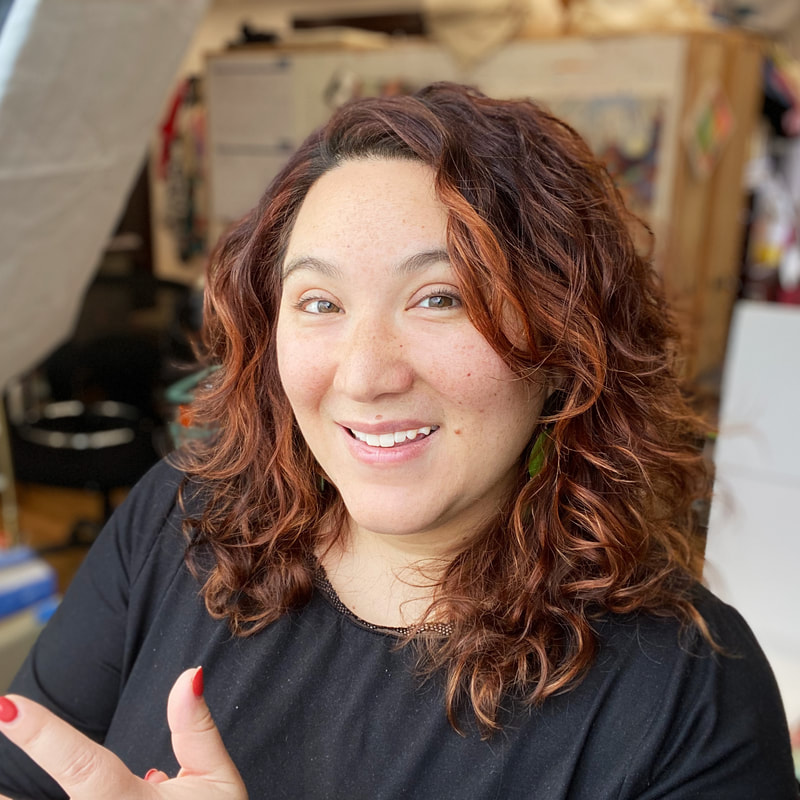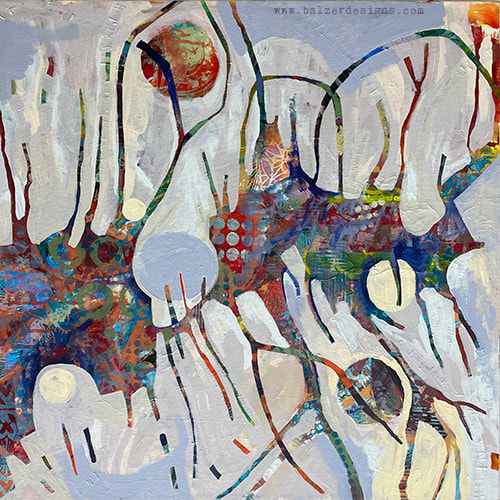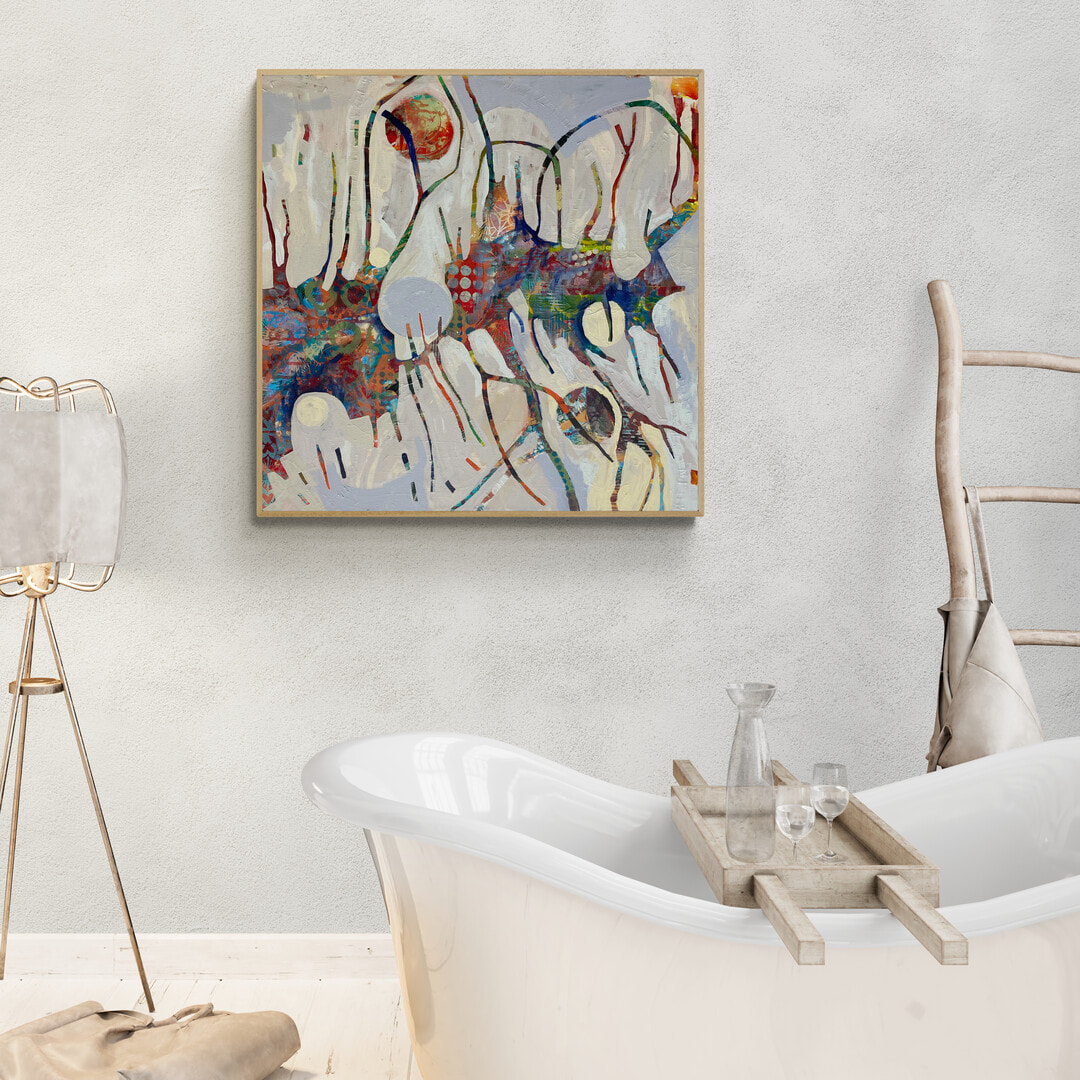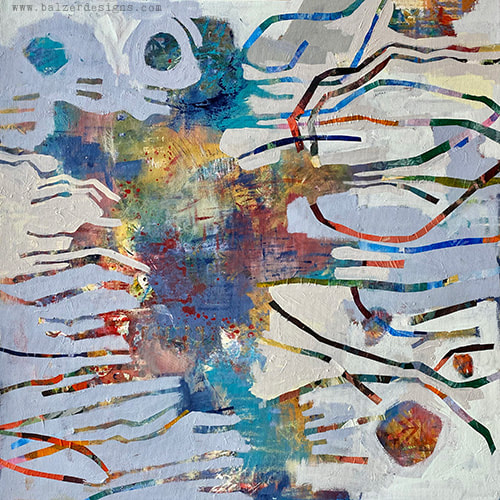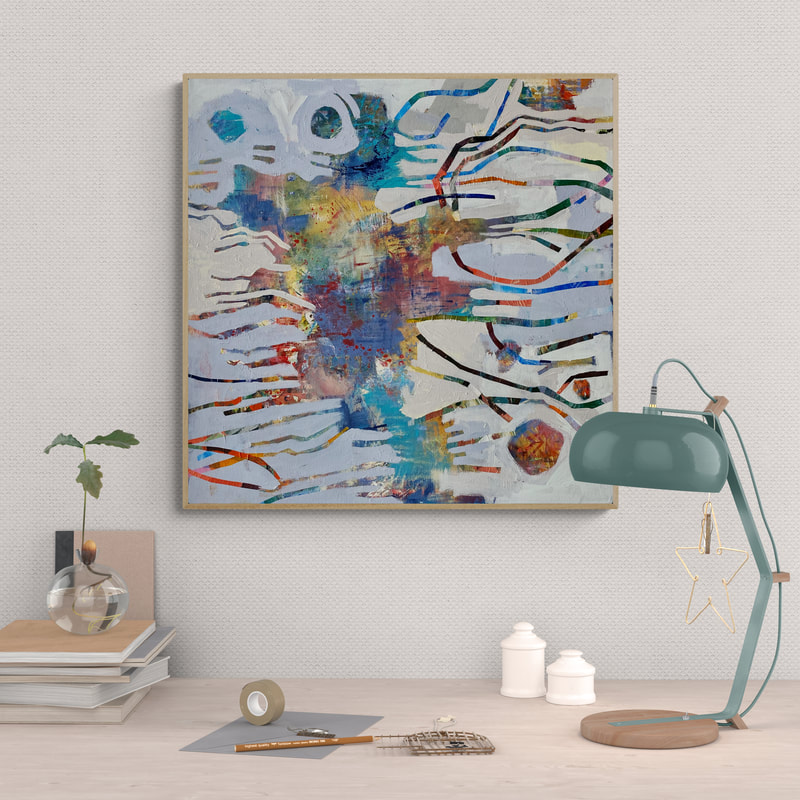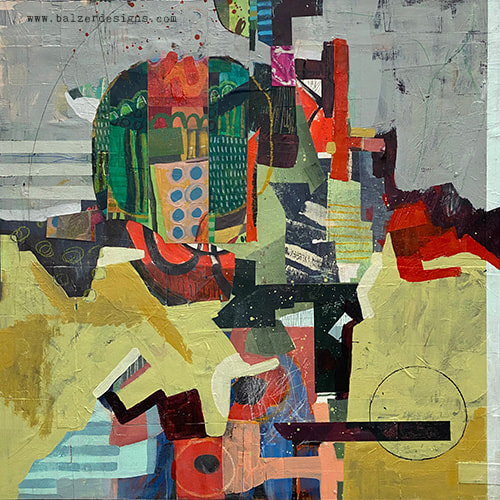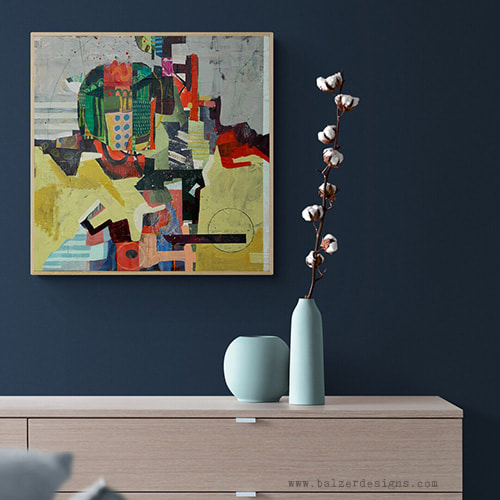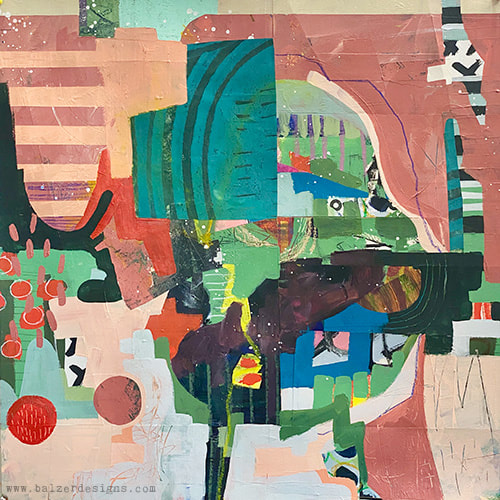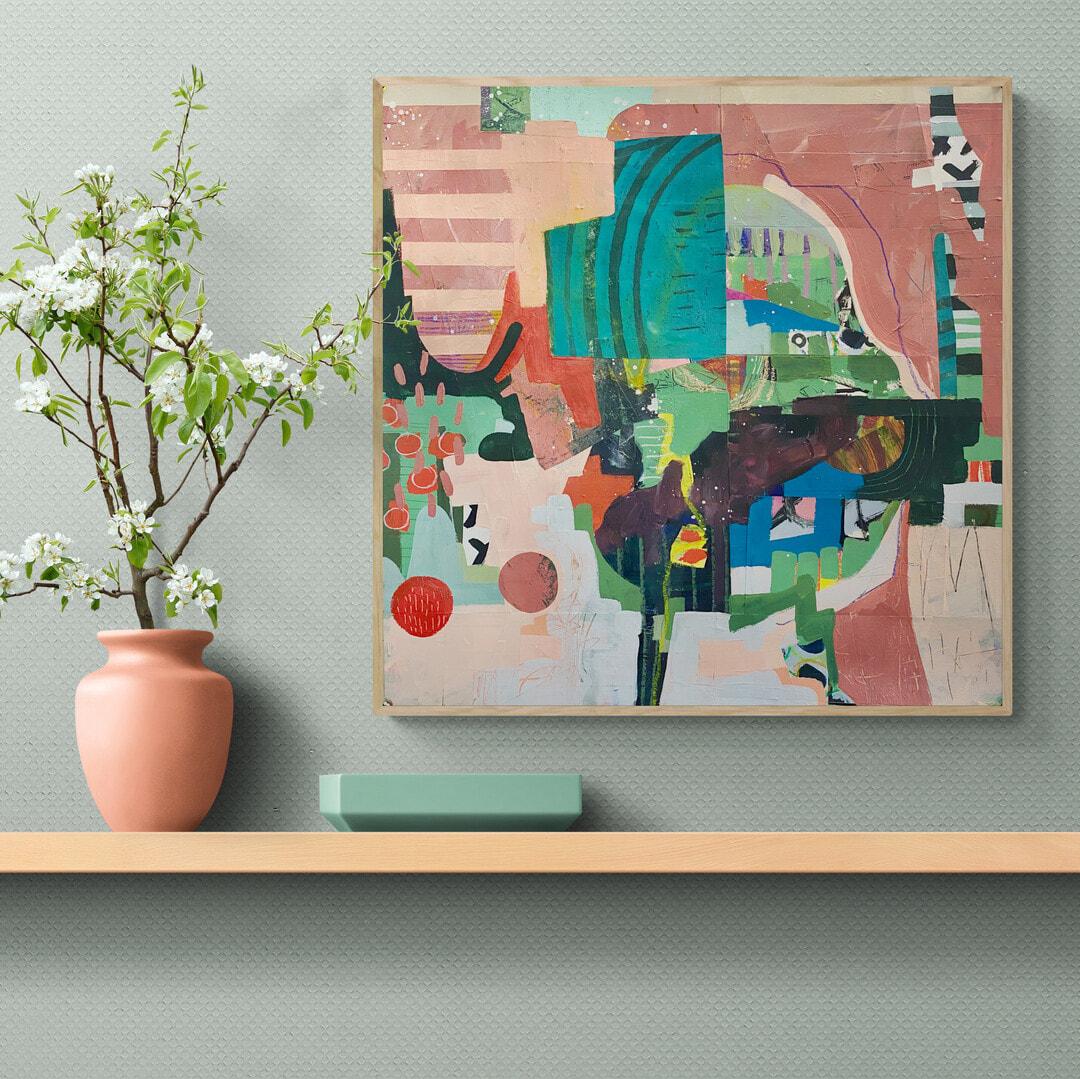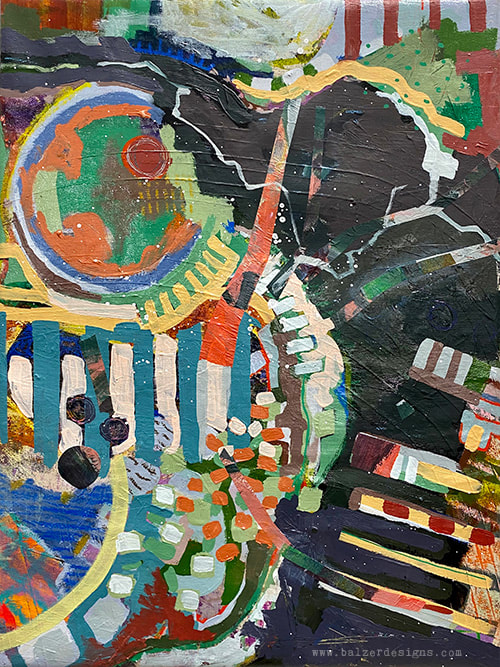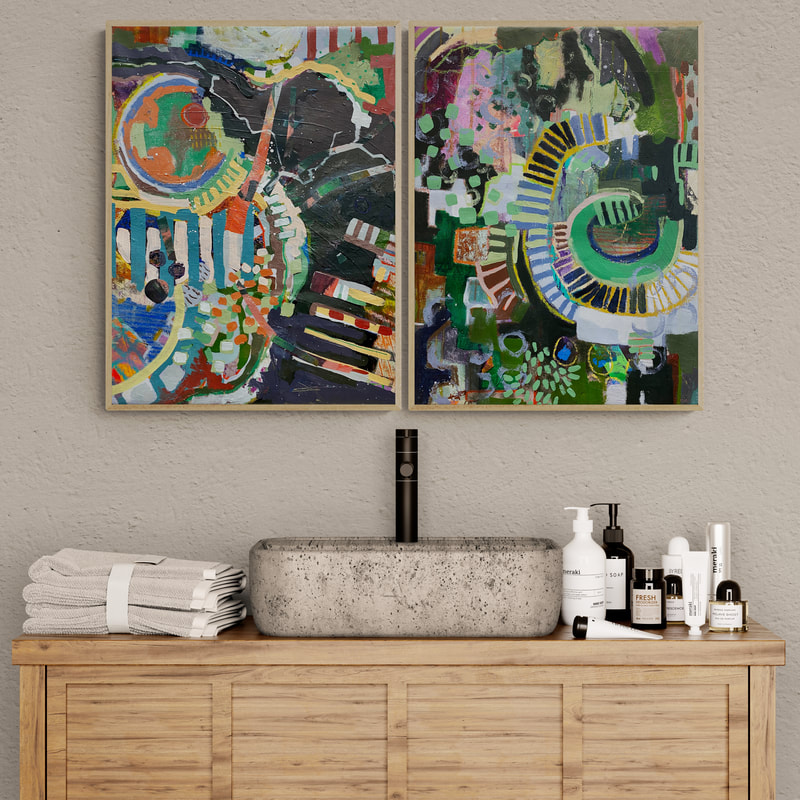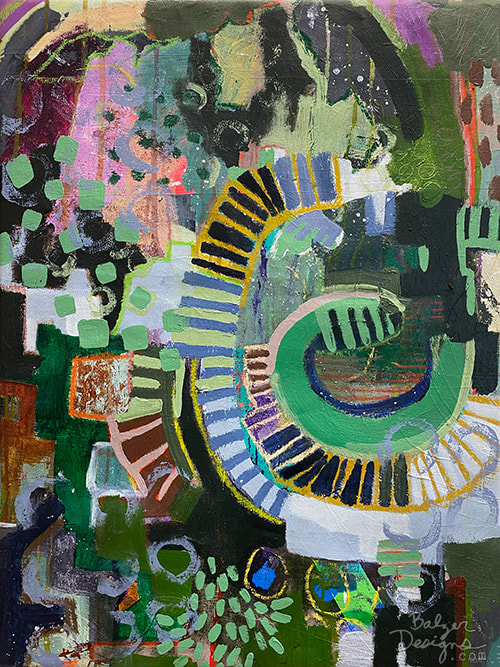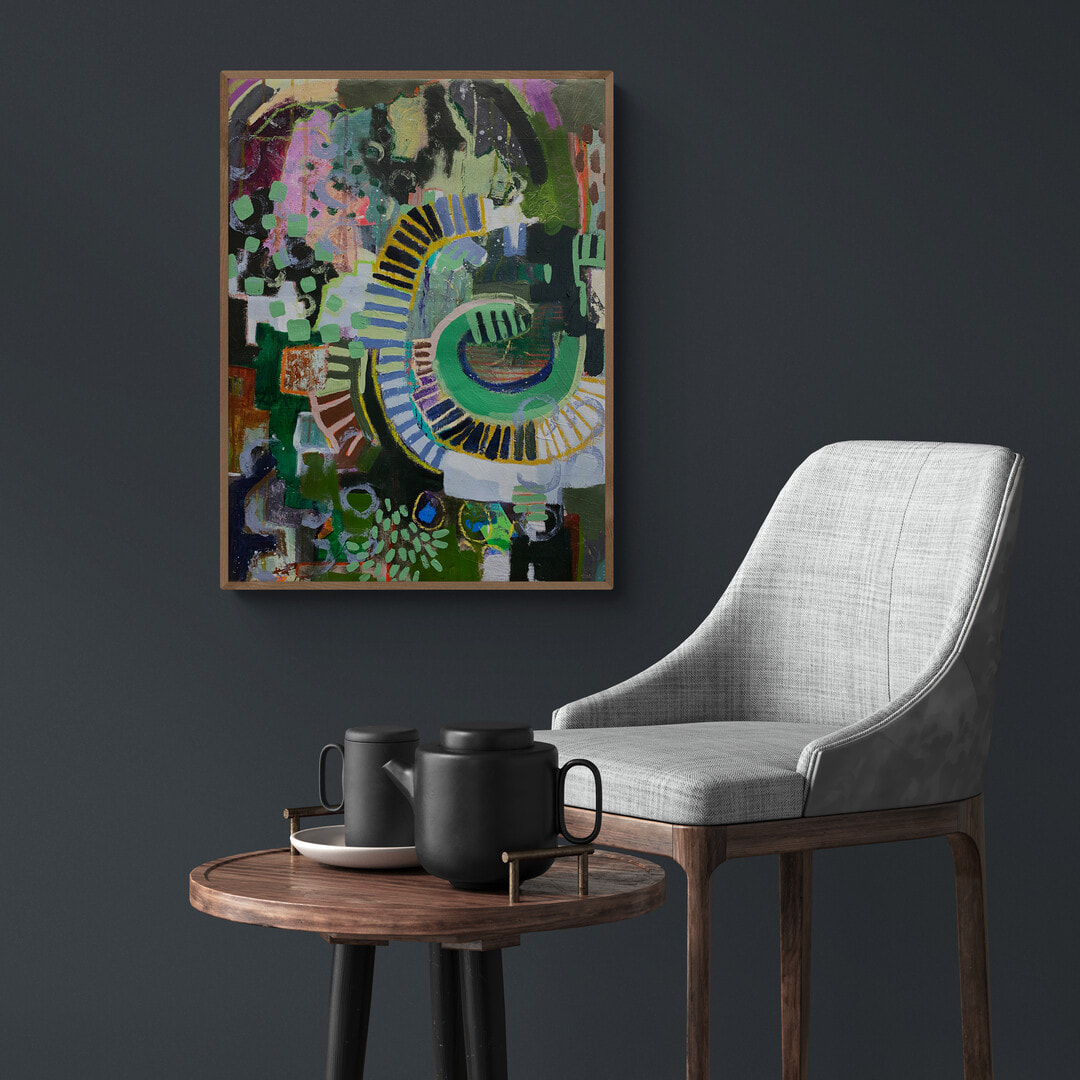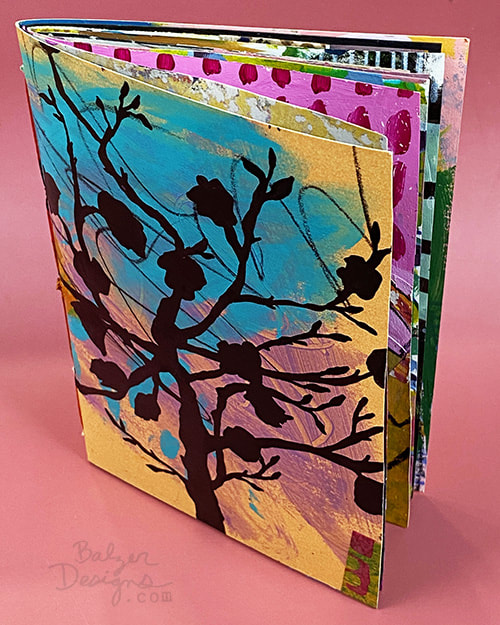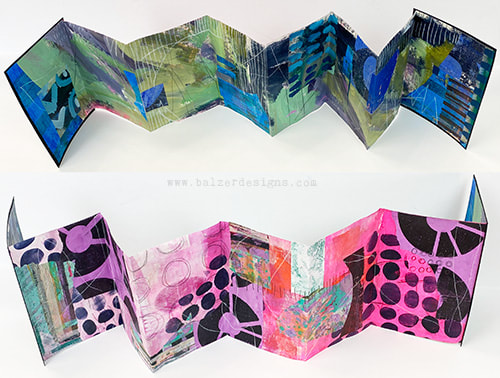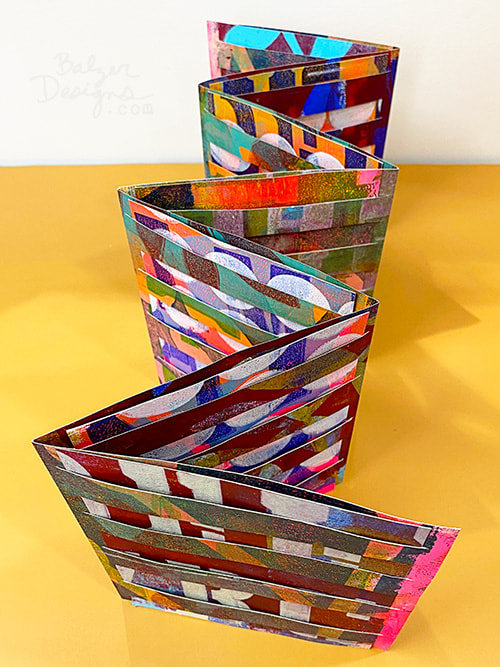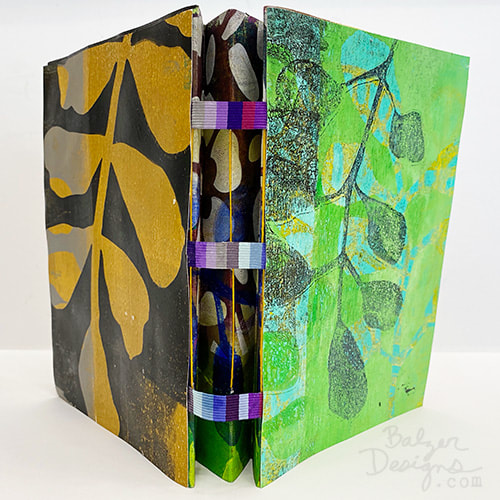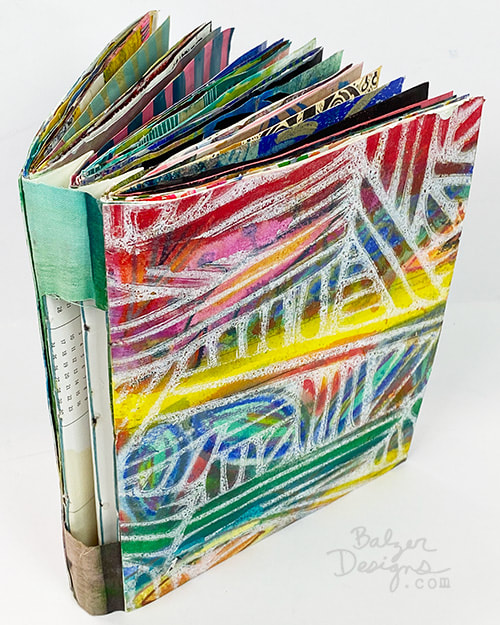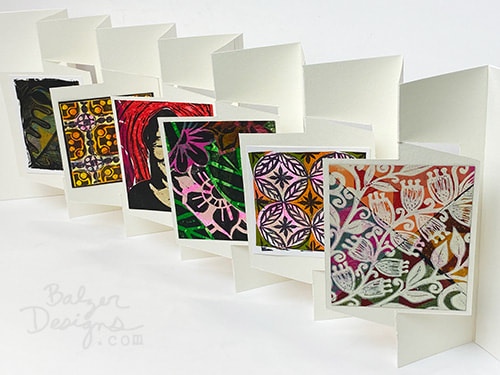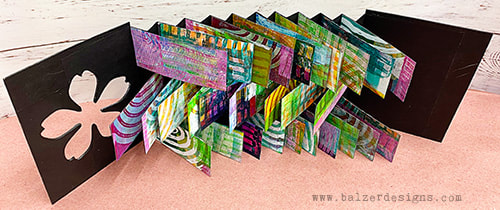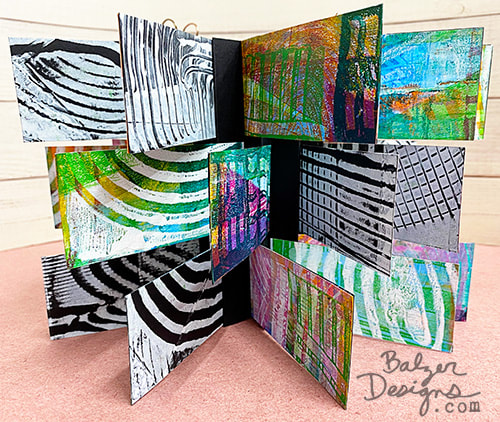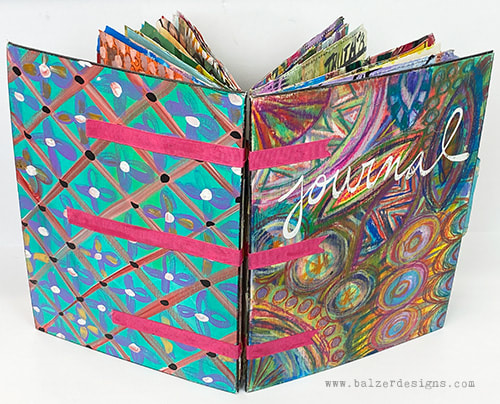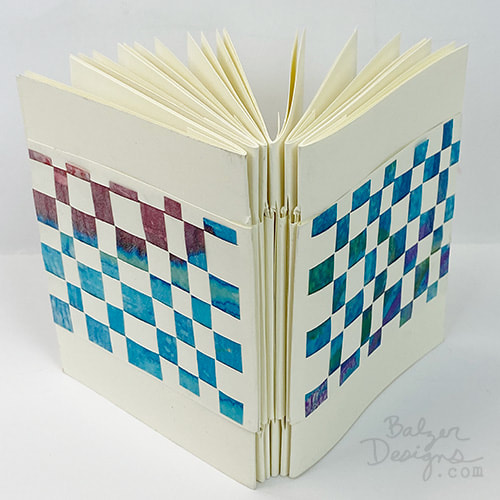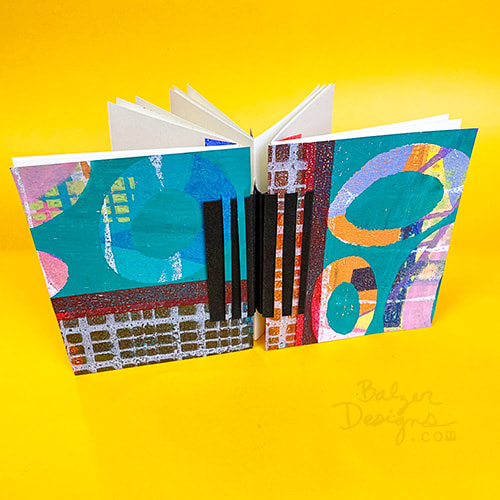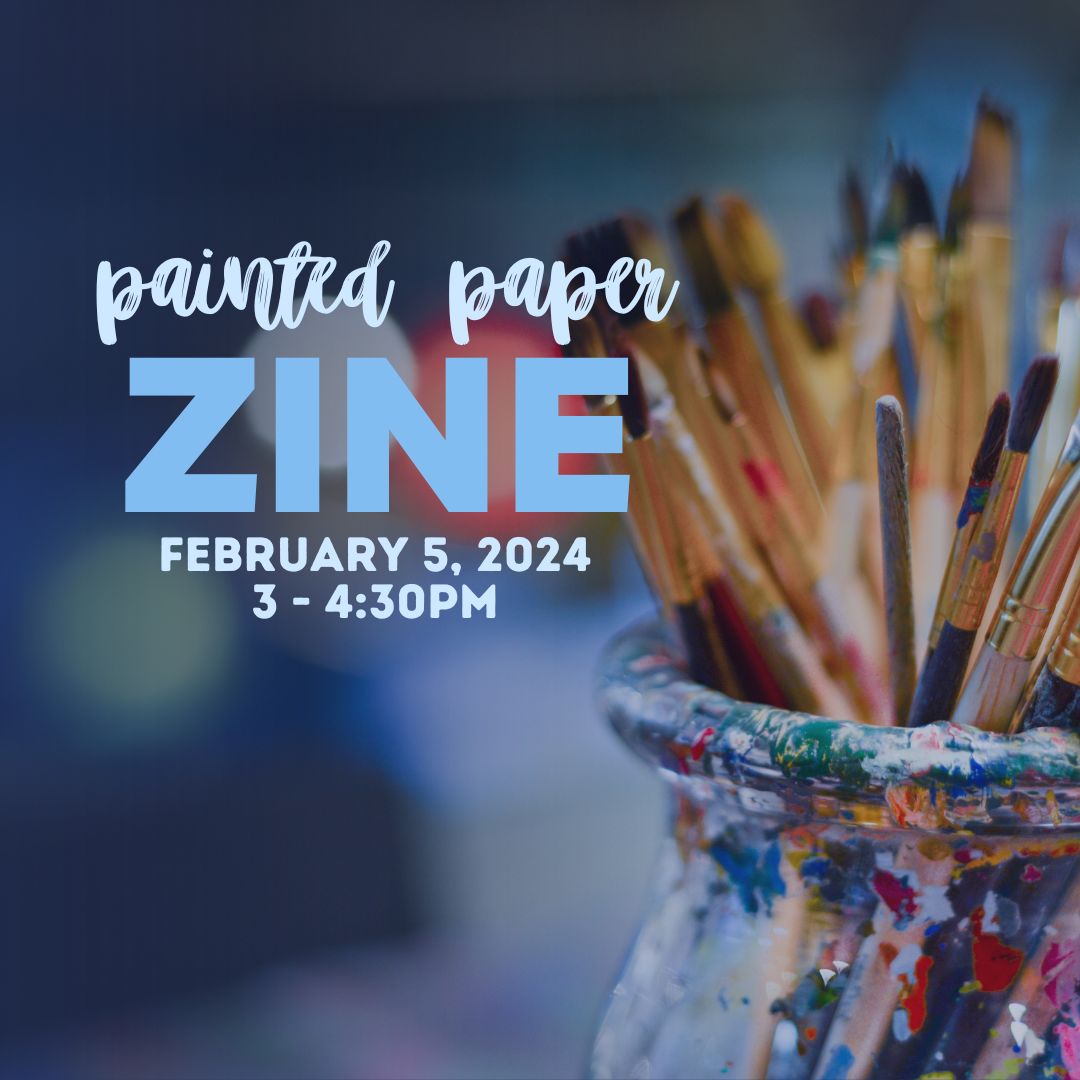Exhibit by Julie Fei-Fan Balzer
at the Watertown Public Library in the T. Ross Kelly Gallery
January 3, 2024 - February 28, 2024
|
All of the artworks in this exhibit were constructed - from the literal forming of flat paper into three-dimensional books, to the careful placement of shape, line, and color in the abstract work on display.
“For me, the process of making art is the process of bringing together various elements and discovering how they change each other once in combination. These visual constructions are similar to the experience of forming a lively dinner party, where you must consider how to seat guests.” Sign up for the FREE Friday e-newsletter
|
WALL ART
These first two artworks were both started in May of 2015 and finished in December of 2023. Balzer enjoys working and reworking her old art. Much of what motivates her work is an exploration of differences. Contrasting artwork from years ago with her current interests and style, within a single artwork, is a temptation Balzer cannot turn down.
Moonlight Stags
|
30x30
Mixed Media Collage on Canvas 2023 |
Leaving Long Island
|
30x30
Mixed Media Collage on Canvas 2023 |
Balzer likes to work on multiple artworks at the same time. These next two pieces were created side-by-side. They're both loosely based on what she saw and how she felt during walks she took with her three-year-old, along the Charles River.
Before I Was Ready
|
24x24
Mixed Media Collage on Cradled Board 2023 |
No Stroller
|
24x24
Mixed Media Collage on Cradled Board 2023 |
This final pairing of paintings used to be a single larger painting. Balzer began her artwork by studying an aerial view of the area around her home. She extrapolated shapes and relationships that interested her and created an enormous fantastical map. At some point, the larger piece felt overworked to her, so she cut up the canvas to keep the parts she loved. Balzer then continued to work on those map fragments, transforming them into the mixed media paintings you see here.
Harbor View
|
18x24
Mixed Media Painting on Canvas 2023 |
Verdure
|
18x24
Mixed Media Painting on Canvas 2023 |
ARTIST BOOKS
Pamphlet Stitch Book
The simplest bookbinding structure is a basic pamphlet stitch. A pamphlet stitch is perfect for joining together a few sheets of paper into a thin book.
This book was made from Balzer’s leftover paper scraps, and as a result, many of the pages are different sizes. The artwork inside was made using a mixture of acrylic paint, collage, and drawing materials.
This book was made from Balzer’s leftover paper scraps, and as a result, many of the pages are different sizes. The artwork inside was made using a mixture of acrylic paint, collage, and drawing materials.
|
You can watch Julie complete a spread inside the book in this video:
|
Watch the video below for a peek inside the book:
|
Concertina Books
|
In 105 AD the Chinese invented a new form of book -- the concertina or fold book. To create the book, one sheet - or several sheets glued together to create a long sheet - was folded back and forth, accordion style. It could be read by flipping each fold (like pages) or opening to see the entire length.
Concertinas are an easy and flexible book form with myriad variations. In this video, you can get a sense of just how long a piece of paper is required to make a concertina book:
|
I painted both sides of a large sheet of paper and turned it into this wonderful woven concertina book:
|
Concertina Pamphlet Hybrids
|
A Concertina Book usually refers to any version of a book made from paper that has been accordion folded. In the Concertina Pamphlet Hybrid, signatures are sewn into each of the Concertina’s valleys, using a pamphlet stitch.
In the example in the photo above, Balzer has used ribbons to hold the concertina spine in a more rigid structure. In the example in the above right photo and in the video, Balzer used fabric to hold the concertina spine in a more rigid structure. You can learn to make this book and many others in the Year of Gelatin Printing online class. |
Take a peek into the Concertina Pamphlet Hybrid book from the photo above in this video:
|
Panel Book (a Concertina Variation)
|
The panel book was first conceived by legendary bookbinder Heidi Kyle. It is a concertina style fold with panels which stand out from the folded edges. The effect, when it’s open, is of individual artworks on display.
All of the artwork in this book was created by Balzer using a printmaking technique called chine-collé. In essentials, the collage paper is glued to the substrate as the image is block printed. Balzer hand painted all of the papers used in the book and designed and carved all of the blocks used for the printing. |
Watch this short video to see this book in motion:
You can learn to make this book and many others in the Year of Gelatin Printing online class. |
Flag Book
|
The flag book is a unique and sculptural book form. As you open the book the flags inside move. This movement changes the viewing experience based on how much the book is opened or closed.
To create the papers in this book, Balzer used acrylic paint and a gelatin plate to create individual mini monoprints. You can learn to make this book and many others in the Year of Gelatin Printing online class. |
Check out this flag book in motion:
|
Tape Bound Book
|
In the early medieval period, European bookbinders began doing “supported sewing” - meaning the book’s signatures were sewn together along supports. They used common thongs or cords and Balzer used ribbons in this example.
The artwork you see was made using a mixture of acrylic paint, collage, and drawing materials. You can learn to make this book in my Junque Journal online class! |
This is what one of my tape bound junque journals looks like right after binding -- before I start working in it.
And this is an example of what it looks like after being worked in:
|
Australian Piano Hinge Books
The Piano Hinge Binding is so named because the way the spine is woven together resembles the hinge on a piano lid. The traditional material for the binding is bamboo skewers. The Australian Piano Hinge Binding reverses the direction of the hinges and uses paper instead of bamboo skewers.
In these two examples from Balzer, she designed one for the binding to stand out, and the other for the binding to blend in. Both examples feature her paper weaving and hand painted papers.
Learn more about these books in this video:
In these two examples from Balzer, she designed one for the binding to stand out, and the other for the binding to blend in. Both examples feature her paper weaving and hand painted papers.
Learn more about these books in this video:

